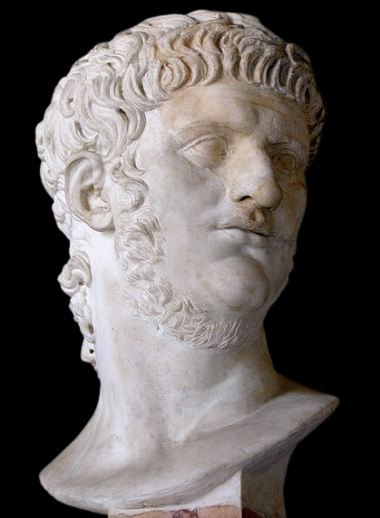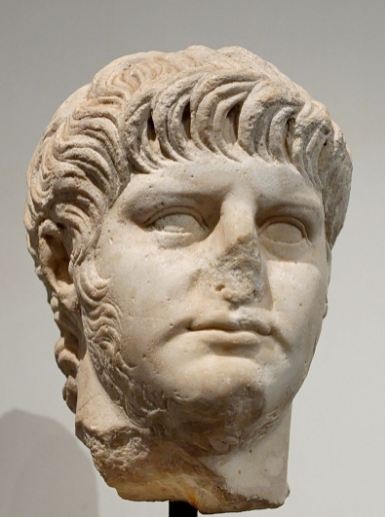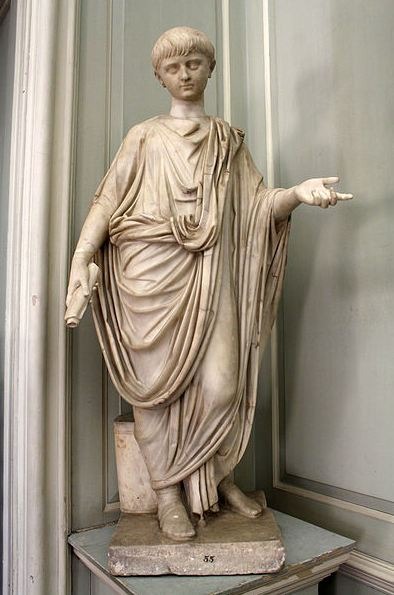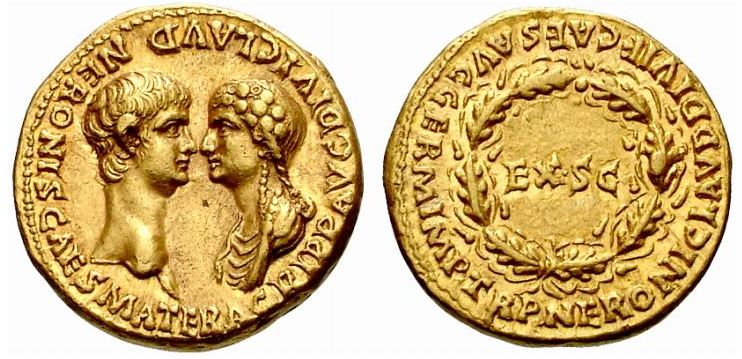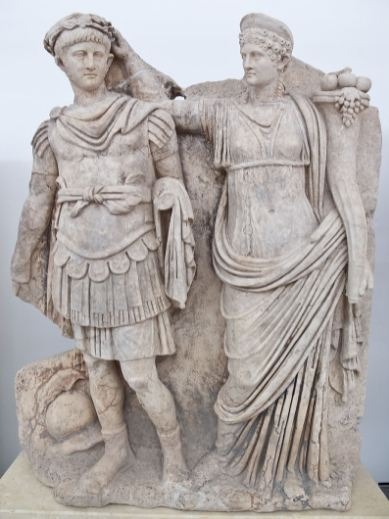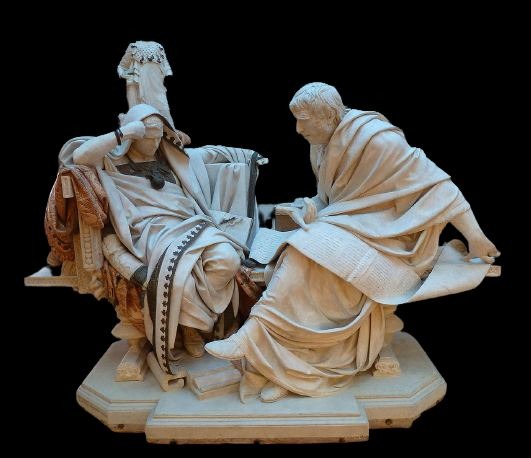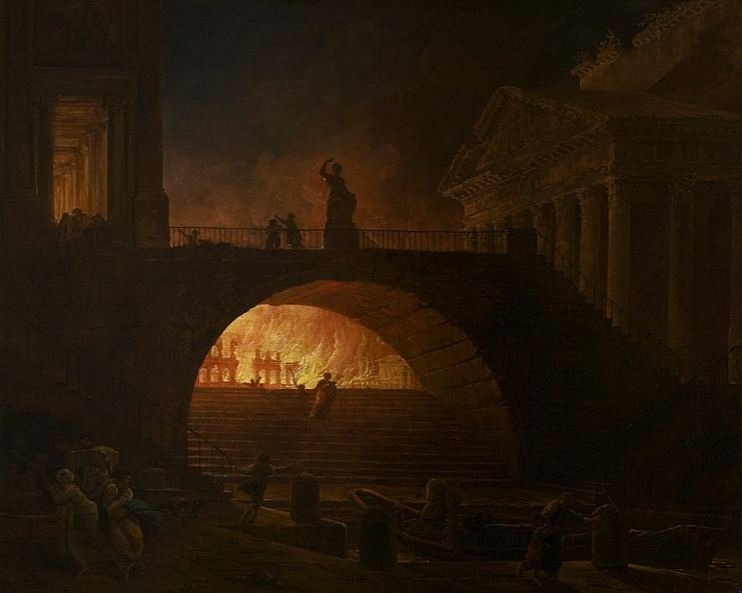We have all heard the famous story of how Nero played the fiddle while Rome burned. For better or worse, he was one of the most famous Roman emperors. This fame seems to arise from his extravagances, personal debaucheries, murders of his family members, and the accusation of him being responsible for the great fire of Rome, among other things.
Today, Emperor Nero is one of the most recognizable names in the history of Ancient Rome. He was fond of music and art.
Nero has been considered a tyrant emperor and has been charged with many crimes by past writers. Given below is an account of his life and his reign as the fifth emperor of the Roman Empire.
Who Was Emperor Nero?
Born as Lucius Domitius Ahenobarbus, Nero’s full name was renamed Nero Claudius Caesar Augustus Germanicus. He was born on 15 December 37 AD and died on 9 June 68 AD. He was the adopted son of the Roman emperor Claudius who became the fifth and last emperor of Rome in the Julio-Claudian dynasty at the age of 17.
Nero was interested in arts and music, going so far to make public appearances as an actor, musician, and poet. He also received a classical education. His rule is associated with tyranny, debauchery, persecution, and extravagancies. With his death, the Julio-Claudian dynasty came to an end.
Emperor Nero’s Upbringing
Nero was born on 15 December 37 AD to Gnaeus Domitius Ahenobarbus (a politician) and Agrippina the Younger. Agrippina was the sister of the third Roman emperor Caligula. Nero’s father was involved in a political scandal before his death. After his father’s death, Nero’s mother was exiled, and he was sent to live with his aunt.
Although the mother and son were reunited when Caligula was murdered. In 49 AD, his mother married Claudius, who became the new emperor after Caligula’s death. Claudius adopted Lucius and renamed him “Nero.”
Seneca, a famous philosopher, tutored Nero. He married his step-sister named Claudia Octavia at the age of 16 and became the heir to Claudius as Claudius had preferred him over his own biological son named Britannicus. At the age of 17, Nero became the emperor after the death of Claudius in 54 AD.
The Early Reign of Emperor Nero
Early during the reign of Nero, Agrippina wanted to control the government herself. She eliminated her rivals and had previously solidified Nero’s rise to power. The earliest coins from Nero’s reign depict both him and his mother. This shows how much influence his mother had on him during those years.
Agrippina’s influence was short-lived as her relationship with her son started to deteriorate. Burrus and Nero’s old tutor Seneca encouraged Nero to become more independent of his mother. By 55 AD, Agrippina’s face stopped appearing on the coins. She started to lose power until she was forced into retirement in 56 AD.
From then on, Burrus and Seneca, Nero’s top advisors, became more powerful and had more control over the government. Not much is known about how much Nero was involved in politics during the early years of his reign.
But during this period, he behaved quite well as an emperor. He abolished secret trials, gave more power to the Senate, banned capital punishment, and reduced taxes, among other things. Up until 59 AD, he was considered a Generous and good ruler.
Nero’s Order to Kill His Mother
In 59 AD, Nero ordered his men to kill his mother. The official reason he gave for killing his mother was that she was plotting to kill him. Agrippina had threatened to side with Britannicus as she saw her influence over Nero being reduced. Britannicus died shortly afterward from poisoning.
A shipwreck was arranged to kill Agrippina, but she survived the wreck and swam to the shore where Anicetus executed her. Her death was later reported as a suicide.
Nero’s Reign after His Mother’s Death
The reign of Nero was going quite well before his mother’s death. After his mother lost her control over Nero, the empire was mostly administered by Burrus and Seneca. This meant that Nero was left to do whatever he wanted. Although Seneca tried to persuade him to be more responsible, he ultimately failed, and Nero became out of control.
In 58 AD, he tried to abolish taxes which was something unrealistic to do. In 62 AD, Burrus died, and this was the same year that Nero first called a treason trial. This trial was followed by many others of the same kind. His support for the Senate started to deteriorate.
Burrus was replaced by Ofonius Tigellinus and Faenius Rufus. Seneca retired in 62 AD after the death of Burrus. As all the figures who had been trying to keep him under control were now gone, Nero now found himself completely free. He would grow to be more violent and depraved.
Nero used his power mostly for personal pleasures. He fell in love with Poppaea Sabina, the wife of a senator. He divorced his first wife, Octavia, as she had not given him an heir. After the public outcry over the divorce, he accused Octavia of adultery with Anicetus and had her executed. Nero then married Poppaea in 62 AD, but she died in 65 AD. He later married Statilia Messalina, a patrician lady.
In 67 AD, Nero also married a young boy named Sporus, whom he had castrated. It is said that Sporus resembled Poppaea.
Nero dreamt of being an artist and considered himself a poet, musician, and charioteer. He would give public performances on stage and in the theater. The emperor performing on stage was an abhorrent idea to the Romans, who considered these actions to be lacking dignity.
The Great Fire of Rome
In 64 AD, a fire started in Circus Maximus on 18 July. This fire burned through most of the city and is remembered as The Great Fire of Rome. It destroyed a large portion of the city, but it is not completely known how the fire started and who started it. Nero blamed the fire on the Christians, and they would later be persecuted because of this accusation.
Although Nero is accused of starting the fire, it is not certain if the statement is true. Nero took advantage of the fire and used the cleared land to start the work on the Golden House, an enormous palace.
The cost to rebuild the city and the new palace was too much for the state treasury. To pay for all this, Nero raised taxes, devalued the currency, took valuable objects from temples, imposed tributes on provinces, and reduced the purity of the silver. Besides Nero, there were also other Roman emperors that have done malicious or nefarious deeds. Check out the 10 Worst and Craziest Roman Emperors of All Time for more information.
The Death of Emperor Nero
In 68 AD, a governor of Gaul named Gaius Julius Vindex rebelled against Nero. Vindex was then joined by the governor of Hispania Tarraconensis named Servius Sulpicius Galba. Galba was declared emperor by the legions. Nero was also declared a public enemy by the Senate and was abandoned by the Praetorian Guard.
Nero fled the city and hid in the house of an imperial freedman. He ordered the few remaining loyal men with him to dig a grave for him. In the end, his private secretary helped him commit suicide, and so Nero died on 9 June 68 AD. Nero is quoted to have said, “Too late! This is fidelity!” as his last words.
His death was followed by instability in the Roman Empire, and Galba was declared the new emperor by the Senate. During the year of the Four Emperors, Rome would be rampaged by civil wars and chaos, with many emperors trying to seize and hold power.
Conclusion
Nero was one of the most famous Roman emperors who is remembered to this day. His reign was an important period in the history of Ancient Rome, and his rule had a significant impact on the political landscape of that time.
Emperor Nero likely started as a well-wishing ruler but ended up as a tyrant.

